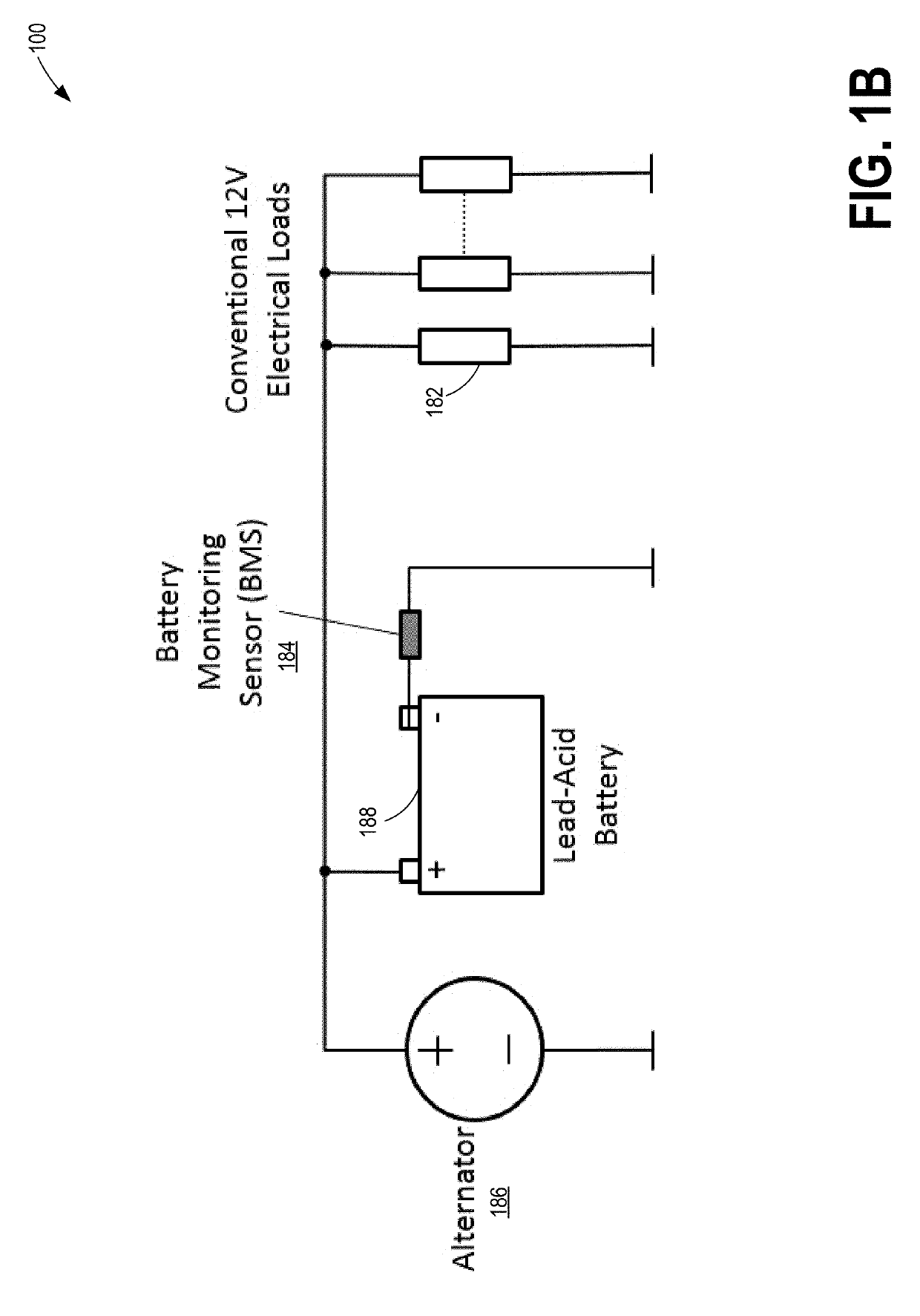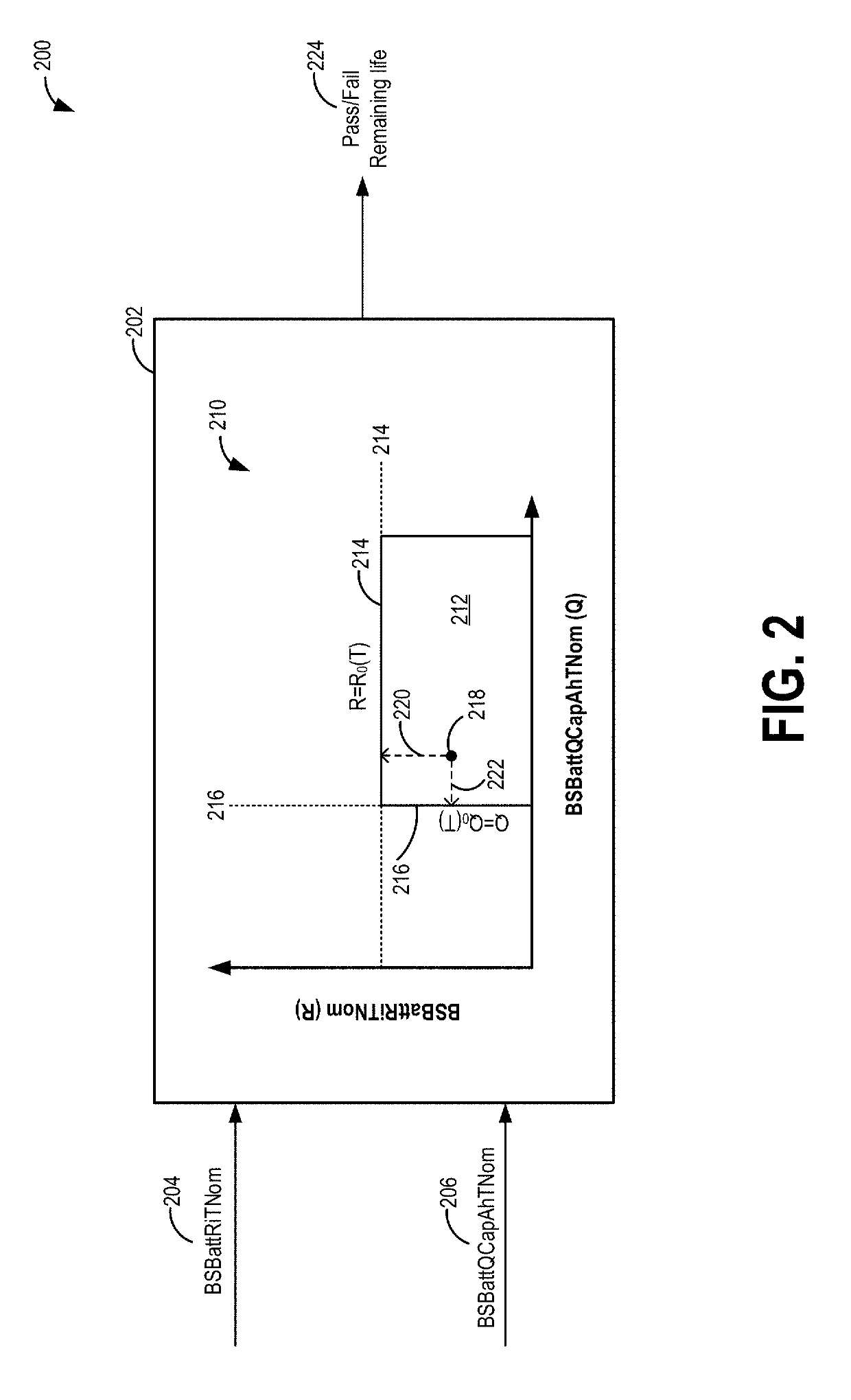Method for predicting battery life
a battery life and battery technology, applied in the direction of battery/fuel cell control arrangement, instruments, electric devices, etc., can solve the problems of reducing driver satisfaction, affecting the service life of batteries, so as to improve the overall battery health, the effect of reducing the number of battery replacements and improving the service li
- Summary
- Abstract
- Description
- Claims
- Application Information
AI Technical Summary
Benefits of technology
Problems solved by technology
Method used
Image
Examples
Embodiment Construction
[0027]The following description relates to systems and methods for predicting the remaining life of a battery of a vehicle system, such as the example vehicle system of FIG. 1A including the battery architecture of FIG. 1B. An on-board controller may be configured perform a control routine, such as the example routines of FIGS. 3-4, to use statistical and measured data to predict the remaining life of a vehicle battery. The controller may compare estimated battery characteristics to corresponding thresholds, as shown at FIG. 2. Further, the controller may estimate a speed of convergence of the estimated battery characteristic to the corresponding threshold, as shown at FIG. 6, to predict the end of life of the battery. The thresholds may be calibrated based on data received from the given vehicle as well as other vehicle data, as explained at FIGS. 5, 7, 10, and 12. In addition, multiple intermediate thresholds preceding the EOL may be selected. Various notifications may be sent and...
PUM
 Login to View More
Login to View More Abstract
Description
Claims
Application Information
 Login to View More
Login to View More - R&D
- Intellectual Property
- Life Sciences
- Materials
- Tech Scout
- Unparalleled Data Quality
- Higher Quality Content
- 60% Fewer Hallucinations
Browse by: Latest US Patents, China's latest patents, Technical Efficacy Thesaurus, Application Domain, Technology Topic, Popular Technical Reports.
© 2025 PatSnap. All rights reserved.Legal|Privacy policy|Modern Slavery Act Transparency Statement|Sitemap|About US| Contact US: help@patsnap.com



